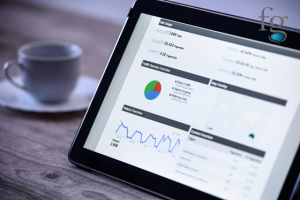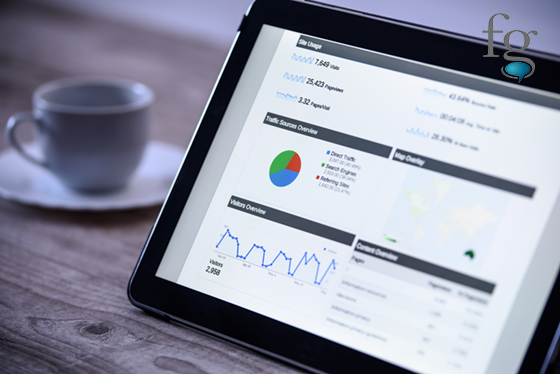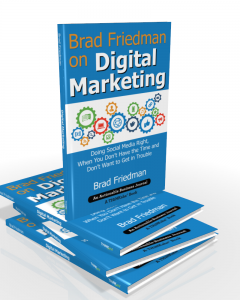Inbound marketing is still a mystery to many. Marketing strategies for both B2B and B2C companies have changed dramatically over the past decade. Marketers are increasingly understanding the benefits of inbound strategies, like search engine optimization, content marketing and leveraging social media over traditional outbound strategies, like direct mail, telemarketing and print ads. Marketing hasn’t changed because marketers woke up one morning and thought, “let’s try doing things in a different way.”
Marketing has changed because consumers have changed. Their mailboxes overflowing with direct mail, inboxes jammed full of spam and promotional emails in which they’re not interested, and an endless stream of unwanted calls from pesky telemarketers, they’re more skeptical than they used to be. To halt the flood of sales pitches they don’t want, more than 200 million Americans have signed onto do-not-call lists, and most now fast forward or hit the mute button to avoid TV commercials.
 Inbound marketers buck this trend with strategies intended to pull consumers toward their companies, products or services. They offer free content speaking to consumer pain points, helpful tips and more. While doing this, inbound marketers are establishing customer trust and loyalty. One key component of establishing trust is personalizing communications, whether this involves targeted emails or customized content. The challenge for marketers is to collect and properly maintain the data which enables those more targeted communications. Remember, trust and credibility is key because people do business with people, not companies.
Inbound marketers buck this trend with strategies intended to pull consumers toward their companies, products or services. They offer free content speaking to consumer pain points, helpful tips and more. While doing this, inbound marketers are establishing customer trust and loyalty. One key component of establishing trust is personalizing communications, whether this involves targeted emails or customized content. The challenge for marketers is to collect and properly maintain the data which enables those more targeted communications. Remember, trust and credibility is key because people do business with people, not companies.
The Challenge of Data Quality
Quality customer data is critical.
“According to IDG, poor data quality is one of the modern marketer’s most pressing concerns, with 66% of those polled citing data accuracy as a “top priority”. And little wonder, when you consider the importance of clean and accurate data, with successful customer relationships depending on having the right information to personalize communications. Furthermore, digital and physical customer communications that either don’t reach the intended recipient or contain inaccurate information can not only represent cost for no return, but could also damage a brand’s reputation.”
The problem of data quality is pervasive, according to Davey, with more than half of all businesses having incomplete, inaccurate, or out-of-date data, data which jeopardizes both revenues and reputation. Davey points to research which indicates more than 60% of all businesses are relying on prospect data that is as much as 40% inaccurate or incomplete, and more than 85% of businesses report their CRM and sales force automation databases contain between 10% and 40% “bad records.”
Consumers Value Personalized Communications More Than Ever
Data quality is critically important because today’s consumers equate highly personalized (and highly accurate) communications with the value of the products and services companies offer. Said differently, an email addressing consumers by the wrong name, or sending them content in which they have no interest, is enough to destroy their trust in the company sending it. Consider these statistics from Hubspot:
- “Nearly three-fourths (74%) of online consumers get frustrated with websites when content (e.g. offers, ads, promotions) appears and has nothing to do with their interests.
- Personalized emails improve click through rates by 14% and conversion rates by 10%.
- The top reasons for U.S. email users to unsubscribe from a business or nonprofit email subscription is too many emails (69%) and irrelevant content (56%).
- 40% of consumers buy more from retailers who personalize the shopping experience across channels.
- In-house marketers who are personalizing their web experiences and who are able to quantify the improvement see, on average, a 19% uplift in sales.”
Highly-accurate, personalized communications improves click through rates, conversions and sales. The challenge for marketers is to collect the right data, and to ensure the data they collect is accurate and up-to-date.
The Right Data
Marketers invest a lot of time and money to construct online forms and monitor consumers’ online behavior, but it’s important to ensure they’re collecting the data which best enable them to target and personalize their communications. Here are the 3 most important types of data to collect:
1. Identity Data
The most critical data for marketers to collect are those which tell them who their customers are, sometimes called identify data. What you need to know about your customers varies widely, depending on the nature of your industry (for example, whether yours is a B2B or B2C business) and the products and services you sell. With this in mind, the most important identity data includes:
- Name, which is usually first and last name, but could depending on your business include title and prefixes, such as J.D. or Ph.D.
- Person information, which includes gender and in some cases data of birth
- Email information, which could include both personal and/or work emails
- Telephone information, including home, work and mobile phones (one caveat: it’s not a good idea to ask for telephone information in the early stages of the buying process—buyers are reluctant to share this information. If you do include telephone number in your online form, make it optional).
- Job information, such as company, department and job title.
2. Quantitative Data
This is behavioral data—specifically, it includes any and all interactions customers have had with your business, such as products they’ve purchased, how many times they’ve visited your website, what pages they accessed, and complaints they’ve registered with customer service. Quantitative data enhances communications by telling you what a customer’s experience with your business has been. The most important quantitative data includes:
- Transactional data: what products (if any) has a customer purchased, what products have been returned, and (for ecommerce businesses) for what products has a customer abandoned your shopping cart?
- Communication data: this is a summary of all communications (both inbound and outbound) your company has had with a customer, when those communications occurred, what emails have been opened, or calls-to-action clicked on.
- Online activity data: this summarizes the number of time a customer has visited your website, when they most recently visited, what pages they accessed, and what products they viewed.
- Customer service data: when, and for what reason, did a customer contact customer service, and for what reason (for example, to register a complaint or seek help).
3. Qualitative Data
Qualitative data is typically collected through questionnaires and surveys in which customers share their attitudes and opinions about your business. Qualitative data is especially helpful because, unlike identity and quantitative data, it allows you to ask customers directly what’s most important to them. The most important types of qualitative data are:
- Attitudinal data, for which you ask customers to rate the products they purchased, the likelihood they will purchase additional products from you, and the quality of customer service they received.
- Opinion data, for which you ask what products customers are most interested in, or what products you don’t offer but which they would purchase if you did.
- Motivational data, where customers tell you why they purchased a product or subscribed to a service—for example, did they buy a product for themselves or as a gift for someone else, or what factors persuaded them to buy a product?
Conclusion
Data collection should never be random—the data you collect should be directly tied to your marketing plan and your key business goals. It’s also important to have a smart plan for maintaining the accuracy of data of over time (for example, email addresses change frequently, as do job titles and marital status). Finally, to better integrate your data and boost the effectiveness of your marketing communications, you should consider investing in robust CRM software. If you collect the right data, link it to marketing goals and keep it up-to-date, you should see be able to achieve your key objectives and boost your business.
For more information about choosing the right CRM and the ways inbound marketing can help you meet your business objectives and boost sales, contact us today.














